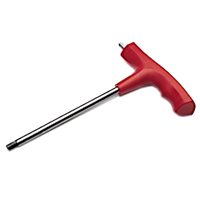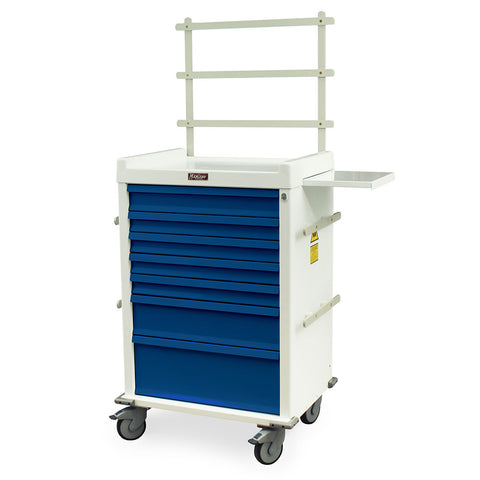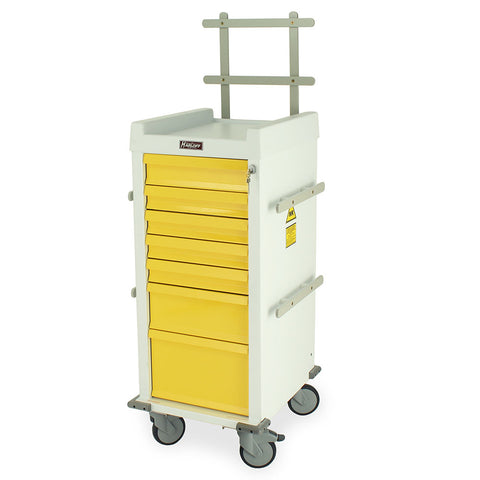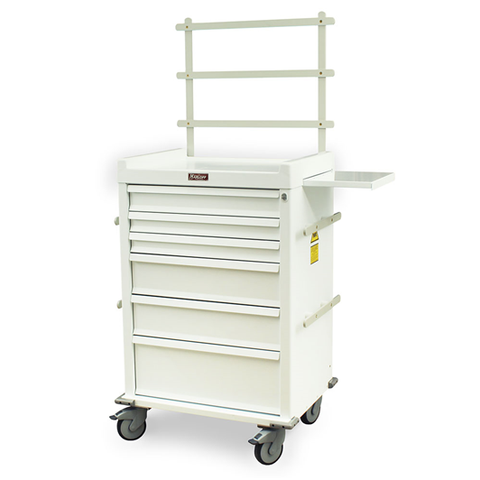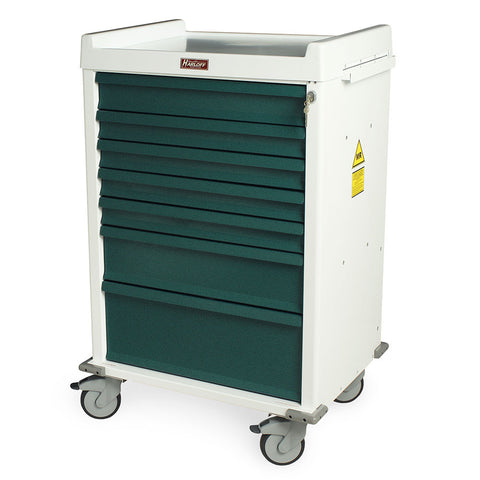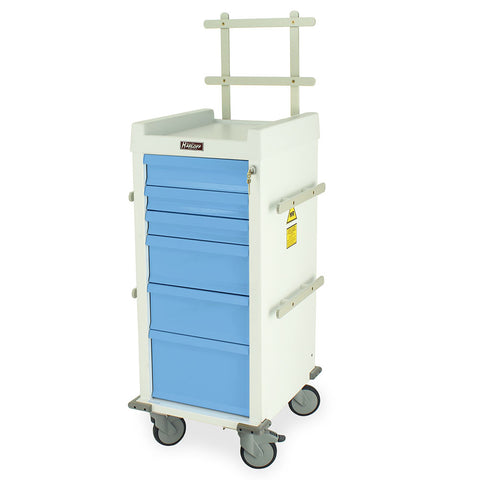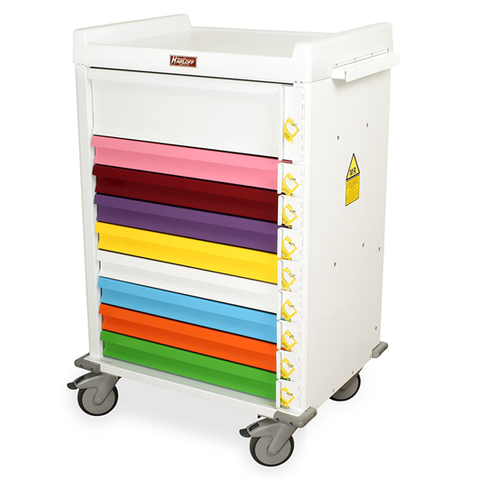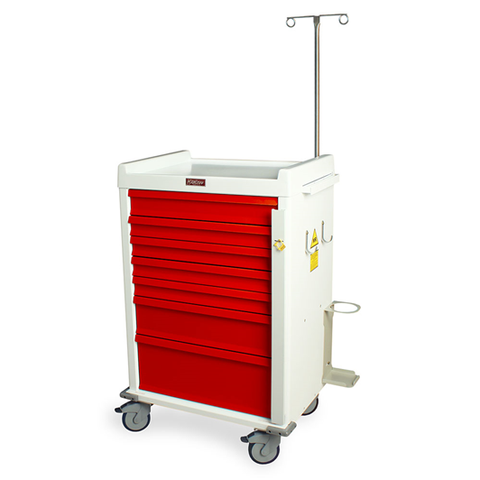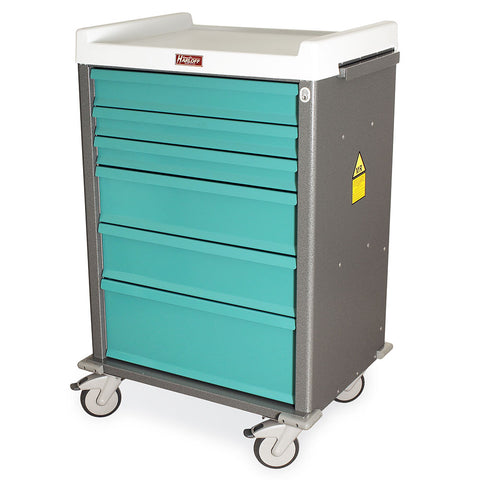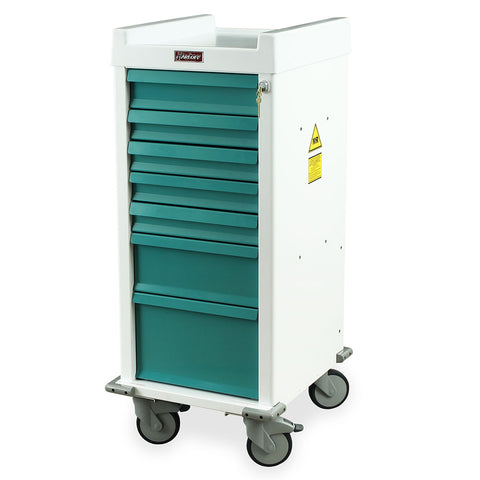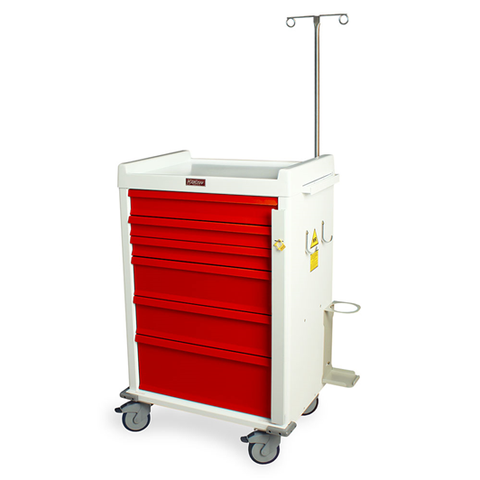Medical imaging, particularly MRI, relies on strong magnetic fields to produce detailed diagnostic images. While MRI technology has advanced, the safety of patients, staff, and equipment remains paramount. MRI safety standards are essential to prevent accidents, maintain image quality, and ensure compliance with regulatory requirements. In 2025, healthcare facilities must pay close attention to updated guidelines for MR-safe equipment, MR-Conditional devices, and MR-Unsafe labeling. This comprehensive guide explains everything you need to know, with practical examples from MRI Med to help hospitals and imaging centers select the right equipment for every MRI zone.
Introduction to MRI Safety Standards
Why MRI Safety Standards Matter
MRI suites create extremely strong magnetic fields, often ranging from 1.5 to 3 Tesla. Any ferromagnetic object entering these areas can become a dangerous projectile, causing severe injury or equipment damage. MRI safety standards exist to protect patients, staff, and imaging systems. Adhering to these standards ensures that all devices used in MRI suites meet strict criteria for magnetic safety. Hospitals must verify that every stretcher, gurney, wheelchair, IV pole, monitor, or surgical instrument is either MR Safe or MR Conditional according to internationally recognized labeling standards.
At MRI Med, all MRI-specific products are tested and certified to meet or exceed these safety requirements, including MRI-Conditional stretchers, non-magnetic wheelchairs, and patient transfer devices.
Evolution of MRI Regulations Over the Years
Since the introduction of MRI technology in the 1970s, safety regulations have evolved significantly. Early MRI rooms lacked formal guidelines, resulting in inconsistent labeling and frequent safety incidents. Over the years, standards such as ASTM F2503 and FDA guidance have formalized MR device classifications. By 2025, these standards are more comprehensive than ever, incorporating advanced testing protocols, precise labeling requirements, and clear definitions of MR Safe, MR Conditional, and MR Unsafe equipment. Hospitals are expected to follow these updated regulations to remain compliant and reduce liability.
Key Changes Expected in 2025
The 2025 updates emphasize stricter adherence to ASTM F2503 labeling, improved staff training requirements, and updated workflow protocols for Zone IV MRI suites. Hospitals must ensure all equipment has current MR labeling verified by certified vendors, and older devices need review for continued safe use. MRI Med products are updated to meet these new guidelines, helping hospitals transition smoothly to compliant workflows.
Understanding MR Safe, MR Conditional, and MR Unsafe Classifications
Definitions and Differences in 2025 Guidelines
MRI equipment is classified into three categories based on magnetic safety:
-
MR Safe: Devices made entirely from non-ferromagnetic materials and pose no risk in MRI environments. Examples include plastic and titanium stretchers.
-
MR Conditional: Devices that may contain certain metallic components but are safe under specified conditions, such as field strength, device orientation, and proximity to the scanner.
-
MR Unsafe: Any equipment that poses significant risk in MRI zones due to strong attraction to magnetic fields or potential interference with imaging.
Labeling Requirements for Medical Equipment
ASTM F2503 specifies clear labeling for all medical devices. MR Safe and MR Conditional labels must include standardized symbols, field strength information, and usage instructions. For instance, MRIMed MRI-Conditional stretchers include detailed labeling to ensure safe use in Zone IV. Accurate labeling is critical to prevent accidents and maintain imaging quality.
Common Misinterpretations and Risks
A common misconception is assuming that plastic equipment is always safe. While many plastic devices are MR Safe, metallic parts hidden inside equipment can make them MR Conditional or Unsafe. Additionally, using MR Conditional devices without following manufacturer-specified conditions can lead to injuries or distorted images. Hospitals must verify device classification before use, using testing tools or certified documentation from trusted vendors like MRI Med.
ASTM F2503 and Other Regulatory Standards
Overview of ASTM F2503 Standards
ASTM F2503 is the international standard that defines MRI device labeling. It specifies requirements for MR Safe, MR Conditional, and MR Unsafe classifications, including testing procedures, documentation, and visual labeling requirements. Following ASTM F2503 helps hospitals mitigate risks and align with regulatory expectations.
FDA Guidelines for MRI Equipment
The FDA provides additional guidance for MRI safety, focusing on device design, labeling, and post-market surveillance. MRI equipment manufacturers must provide testing results demonstrating compliance with both ASTM F2503 and FDA standards. At MRI Med, all devices adhere to these combined requirements.
International Safety Standards and Considerations
In addition to ASTM and FDA guidelines, many countries have adopted MRI safety standards tailored to local regulations. International buyers of MRI equipment should ensure devices meet both local regulations and ASTM F2503. Products from MRI Med are manufactured and certified for global compliance, including MRI-Conditional gurneys, wheelchairs, and patient transfer devices.
Equipment Evaluation and Verification in 2025
MRI-Conditional Stretchers and Gurneys
MRI-Conditional stretchers and gurneys from MRI Med are tested to withstand MRI magnetic fields safely. Adjustable-height models allow flexible workflow without risking patient or staff safety. Each stretcher is verified for Zone IV compliance.
Non-Magnetic Wheelchairs and Patient Transfer Devices
Non-magnetic wheelchairs and patient transfer equipment are essential for safe movement within MRI suites. MRI Med wheelchairs use aluminum frames and high-grade plastics, eliminating magnetic interference while maintaining durability.
IV Poles, Monitors, and Support Equipment
IV stands, vital sign monitors, and infusion devices designed for MRI use must be non-ferromagnetic. MRI Med non-magnetic IV poles and monitoring devices allow continuous patient care without compromising image quality.
Tools for Testing and Verifying MRI Safety
Hospitals should maintain handheld gaussmeters, ferromagnetic detectors, and ASTM-compliant verification protocols to ensure ongoing device safety. MRI Med provides documentation and testing results for all products.
Workflow and Operational Guidelines
Zone IV Safety Protocols
Zone IV MRI rooms require the strictest safety measures. Only MR Safe and MR Conditional devices are permitted. Proper workflow ensures that all equipment enters the scanner room according to manufacturer and ASTM F2503 specifications.
Staff Training and Awareness Programs
Staff must be trained in MR safety protocols, labeling interpretation, and emergency procedures. MRIMed provides training resources for safe equipment handling, reducing the risk of projectile accidents.
Equip Your Team with Tools They Can Trust
Get high-quality, MRI-dedicated equipment that supports safer scans, better positioning, and smoother patient care.
View Trusted ProductsMaintenance, Documentation, and Regular Inspections
Routine maintenance of MRI-safe devices is critical. Non-magnetic wheels, gurney surfaces, and IV poles should be inspected regularly. Documentation ensures traceability and compliance with 2025 standards.
Common Mistakes and How to Avoid Them
Ignoring Updated Standards
Using outdated devices or ignoring 2025 updates can lead to accidents or regulatory violations. Ensure all equipment meets ASTM F2503 and FDA guidelines.
Using Improperly Labeled Equipment
Mislabeling or unlabeled devices create confusion and hazards. Always verify labels and cross-reference with manufacturer documentation from trusted sources like MRI Med.
Lack of Staff Training and Compliance Checks
Even certified equipment is unsafe if staff misuse it. Ongoing education and compliance audits are essential for Zone IV safety.
Benefits of Following Updated MRI Safety Standards
Improved Patient Safety and Reduced Risk
Proper adherence to MRI safety standards eliminates projectile hazards, reducing the risk of injury during scanning.
Enhanced Imaging Quality and Diagnostic Accuracy
Non-magnetic equipment prevents image artifacts, ensuring accurate and reliable diagnostic results.
Legal and Regulatory Compliance
Following ASTM F2503, FDA, and international guidelines protects hospitals from liability, fines, and legal repercussions.
How to Choose Certified MRI Equipment in 2025
Evaluating Material and Construction
Verify that stretchers, gurneys, and wheelchairs use non-ferromagnetic metals (aluminum, titanium) and high-grade plastics. All MRI Med products meet these criteria.
Vendor Certification and Documentation
Work only with certified suppliers who provide ASTM F2503 documentation. MRI Med offers full compliance certificates and detailed testing reports.
Long-Term Value and Safety Considerations
Investing in certified MRI-safe equipment reduces maintenance costs, prevents injuries, and supports long-term operational efficiency.
FAQ:
1. What are the most important MRI safety updates for 2025?
Stricter ASTM F2503 adherence, updated Zone IV protocols, and enhanced staff training requirements.
2. Can older equipment still be used under new standards?
Only if it has been re-evaluated and documented for 2025 compliance.
3. How do I verify a device meets 2025 MRI safety requirements?
Check ASTM F2503 labels, vendor documentation, and, if necessary, perform magnetic testing.
4. Are MR-Conditional devices allowed in all MRI zones?
No, they are only safe under specified conditions and field strengths.
5. How often should MRI equipment be inspected according to 2025 standards?
At least annually or per manufacturer guidelines, with additional checks after heavy use or damage.
Related Articles
-
How to Choose MRI-Safe Equipment: Compliance, Safety, and Zones
-
Understanding MRI-Safe, MR-Conditional, and MR-Unsafe Labels
